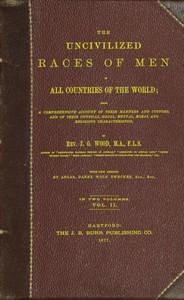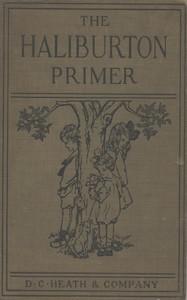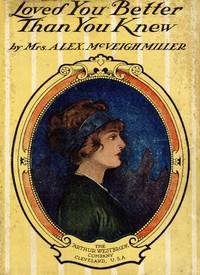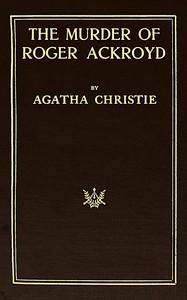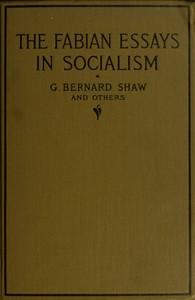|
|
Read this ebook for free! No credit card needed, absolutely nothing to pay.Words: 522743 in 124 pages
This is an ebook sharing website. You can read the uploaded ebooks for free here. No credit cards needed, nothing to pay. If you want to own a digital copy of the ebook, or want to read offline with your favorite ebook-reader, then you can choose to buy and download the ebook.

: The uncivilized races of men in all countries of the world; vol. 2 of 2 Being a comprehensive account of their manners and customs and of their physical social mental moral and religious characteristics by Wood J G John George - Ethnology; Anthropology; M@FreeBooksThu 08 Jun, 2023 Chap. Page. Chap. Page. MEDICINE, SURGERY, AND THE DISPOSAL OF THE DEAD. BILBOS, OR NATIVE DOCTORS -- WOUNDS AND BRUISES -- A STRANGE CURE -- TREATMENT OF THE HEADACHE -- A DREAM AND ITS RESULTS -- THE MAGIC CRYSTAL, OR DOCTOR-STONE -- ITS EFFECTS ON WOMEN AND CHILDREN -- THE DOCTOR-HOUSE -- SUCTION AS A MEANS OF CURE -- BELIEF IN CHARMS -- THE PARENT'S SKULL -- CEREMONIES OF MOURNING -- CUTTING THE HEAD AND BODY AS A SIGN OF WOE -- DRIVING AWAY THE EVIL SPIRITS -- FEAR OF GHOSTS -- BURIAL AMONG THE PARNKALLAS AND NAUOS -- THE TOMB OF SKULLS -- A SUMMARY MODE OF BURIAL -- FUNERAL OF BOYS -- THE TREE-TOMBS -- SMOKING THE WARRIORS -- INCONSISTENT BEHAVIOR -- BURIAL OF OLD WOMEN -- THE WIDOWS' CAPS -- RELIGIOUS IDEAS OF THE ABORIGINES -- THE VARIOUS EVIL SPIRITS -- THE BUNYIP -- ROCK AND CAVE PAINTINGS -- THEORY OF TRANSMIGRATION. We will now see how the Australian natives treat sickness of various kinds. Among them are certain personages called bilbos, or doctors, to whom the sick usually appeal in cases of illness or pain. It is not known, however, whether the mere fact of age gives a man the rank of bilbo, or whether it is attained by sundry ceremonials, as is the case with the Africans and other savages. The most usual mode of treating any local disease or pain is by pressing the hands upon the affected part, and kneading it, a remedy which is found in every part of the world, and which is really efficacious in many complaints, especially in rheumatic affections, or in sprained or over-exerted muscles. If a limb be wounded, bruised, or sore, the native practitioners tie a fillet tightly above it, for the purpose, as they say, of preventing the malady from reaching the body. Headaches are treated by tying a bandage firmly round the temples, and, if the pain be obstinate, the doctors bleed the patient under the arm, using a sharp piece of quartz as a lancet. The flowing blood is never allowed to be wasted, but is received on the body of the operator, and diligently rubbed into the skin, under the notion that by this process both parties are strengthened. This depends, however, on the sex of the patient, women being never bled, nor allowed to have the blood of any other person sprinkled upon them. About 1832, a curious disease broke out among the natives of Wellington Valley, resembling the small-pox in many things, and yet displaying symptoms which scarcely belong to that dread disease, the one fatal scourge of savage tribes. It was preceded by headache, fever, sore-throat, &c., and accompanied by pustules very much resembling those of the small-pox. It was, however, scarcely virulent enough for the real disease, though it was probably a milder form of it, and was subject to the power of vaccine matter. It was not limited to the natives, but attacked many Europeans just like the genuine small-pox, and in one case was fatal. It is here mentioned on account of the mode of cure adopted by the native doctors. They punctured the pustules with sharp fish-bones, and squeezed them well with the blunt end of their rude lancets, and it is a noteworthy fact that the rate of mortality was very much reduced. Of course the doctors used other modes, whereby they gave their patients confidence in their powers. The chief of these was performed by means of a number of slender rods, six to nine feet in length, which were stuck in the ground in the form of a crescent, and addressed with long speeches and many mysterious gestures. Among the Australians, this disease, whatever it may be, does not strike the abject terror with which it is usually accompanied. Although they know that it is infectious, they do not abandon the sick person, unless perhaps the doctor pronounces the patient incurable; in which case they save him prolonged pain, and themselves useless trouble, by burying him alive. The native term for this disease is "thunna-thunna," and it is known to have existed when the country was first discovered, so that it is not imported from civilized countries. Another remarkable kind of cure for the headache is mentioned by Mr. Angas. The patient being seated on the ground, a string is tied round his head, the knot being carefully adjusted to the middle of the forehead. The operator, who is always a woman, seats herself opposite the patient, places the line between her lips, and frets them with it until they bleed freely. The idea is that the disease, attracted by the blood, passes along the line from the patient's head, and is cast out together with the blood. A very remarkable instance of this mode of cure is related in Tyerman and Bennett's "Voyage round the World." A man had dreamed that he had been speared in the side, and had died in consequence of the wound. Although, when he woke, he knew it was but a dream, he was so frightened that he became very ill, retired to his hut, chose the place of his burial, and lay down to die. "Then he applied his mouth again to the swollen part, from which, although there was no visible wound, he appeared to draw blood and corrupt matter, stains of both being soon seen on the swarthy skin. At length, with distended cheeks, as though he had filled his mouth with the abominable matter, he ran about, anxiously looking for a fit place to discharge it upon; but, affecting to find none, he crossed the water, and deposited the nauseous extract behind a bush. The poor man's hopes revived, and he now believed that he should get well again. Mr. Dunlop thereupon sent him some tea, which, however, he would not drink, but requested that it might be given to the sorcerer, and, if he drank it, then it would do himself good. He was deceived, disappointed, and died." The Australians are tolerably good surgeons in a rough-and-ready sort of way, and are clever at setting broken limbs. After bringing the broken ends of the bone together, they support the limb by several pieces of wood which act as splints, and then make the whole secure by bandages, which they often strengthen with gum, exactly as is done in modern surgery. Free books android app tbrJar TBR JAR Read Free books online gutenberg More posts by @FreeBooks
: The Haliburton primer by Haliburton M W Margaret Winifred Payne Bruce Ryburn Author Of Introduction Etc Burd C M Clara Miller Illustrator - Readers (Primary)@FreeBooksThu 08 Jun, 2023

: Loved you better than you knew by Miller Alex McVeigh Mrs - Dime novels; Romance fiction@FreeBooksThu 08 Jun, 2023

: The murder of Roger Ackroyd by Christie Agatha - Private investigators England Fiction; Detective and mystery stories; Murder Investigation Fiction; Belgians England Fiction; Poirot Hercule (Fictitious character) Fiction@FreeBooksThu 08 Jun, 2023
|
Terms of Use Stock Market News! © gutenberg.org.in2025 All Rights reserved.

